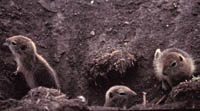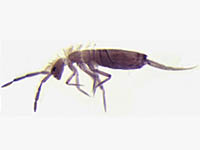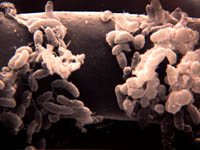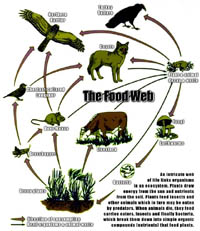Soil Macrofauna
Soil Mesofauna
Soil Microfauna
Soil Macroflora
Soil Microflora
Soil Food Web


|
The study of the living component of soils is called Soil Biology. The classification (taxonomy) and study of soil organisms is largely based on physical similarities. Some organisms have proven difficult to classify. For example fungi (mushrooms) were often classified in the Plantae kingdom but sufficient differences exist that they now have their own kingdom. The five kingdom system of classification is in wide use: Animalia (animals), Fungi (mushrooms), Plantae (plants), Protista (simple algae, protozoa) and Monera (bacteria and blue-green algae). Many scientists, however, feel that this system of classification does not fully represent evolutionary patterns. The new field of cladistics is an attempt to correct this problem. |
| In this section we will take a simple approach to study soil organisms, dividing them first into two
groups: Animals (fauna) and Plants (flora).
Next we break down these groups further into more manageable divisions based on size of the organism: large, medium, and small or Macro- Meso- and Micro-. But exactly how big is Macro-? We have to define the limits for each size group. Macro organisms are considered to be larger than 2 mm in diameter greater than the thickness of a looney. Meso organisms are between 2 mm and 0.2 mm in diameter. Micro organisms are less than 0.2 mm and we normally need a magnifying glass or microscope to observe them. When you study soil organisms try to understand not only the individual organisms but also the complex interactions and processes that make them part of the soil ecosystem. Particularly important is the complex food chain or more correctly the food web in which energy passes from primary producers (plants) to consumers in a predatory cycle that forms a crucial part of life on our planet. Many soil organisms are beneficial but others are devastating to crops and animals. Beneficial organisms take part in many physical and chemical reactions that improve soil structure, break down organic matter and cycle nutrients. Others, however such as the tiny nematode, a worm,less than 0.1 mm long can cost farmers billions of dollars, every year, in lost production. |

Important soil macrofauna include:
|


